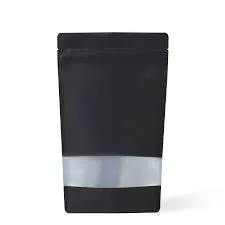- Afrikaans
- Albanian
- Amharic
- Arabic
- Armenian
- Azerbaijani
- Basque
- Belarusian
- Bengali
- Bosnian
- Bulgarian
- Catalan
- Cebuano
- chinese_simplified
- chinese_traditional
- Corsican
- Croatian
- Czech
- Danish
- Dutch
- English
- Esperanto
- Estonian
- Finnish
- French
- Frisian
- Galician
- Georgian
- German
- Greek
- Gujarati
- haitian_creole
- hausa
- hawaiian
- Hebrew
- Hindi
- Miao
- Hungarian
- Icelandic
- igbo
- Indonesian
- irish
- Italian
- Japanese
- Javanese
- Kannada
- kazakh
- Khmer
- Rwandese
- Korean
- Kurdish
- Kyrgyz
- Lao
- Latin
- Latvian
- Lithuanian
- Luxembourgish
- Macedonian
- Malgashi
- Malay
- Malayalam
- Maltese
- Maori
- Marathi
- Mongolian
- Myanmar
- Nepali
- Norwegian
- Norwegian
- Occitan
- Pashto
- Persian
- Polish
- Portuguese
- Punjabi
- Romanian
- Russian
- Samoan
- scottish-gaelic
- Serbian
- Sesotho
- Shona
- Sindhi
- Sinhala
- Slovak
- Slovenian
- Somali
- Spanish
- Sundanese
- Swahili
- Swedish
- Tagalog
- Tajik
- Tamil
- Tatar
- Telugu
- Thai
- Turkish
- Turkmen
- Ukrainian
- Urdu
- Uighur
- Uzbek
- Vietnamese
- Welsh
- Bantu
- Yiddish
- Yoruba
- Zulu
Understanding Aqueous Coating and Its Benefits for Printing and Packaging Industries
What is Aqueous Coating?
Aqueous coating is a water-based protective layer applied to printed materials, such as catalogs, brochures, labels, and other commercial printing products. This coating is primarily used to enhance the appearance and durability of printed items. Over the years, it has gained popularity due to its environmentally friendly nature, efficacy in protecting printed surfaces, and the glossy or matte finish it provides.
Composition and Application
The primary component of aqueous coatings is water, which serves as a solvent for the resins and additives. These coatings can be classified into different types based on their composition and intended applications. Common resins used in aqueous coatings include acrylic, modified acrylic, and polyurethane resins. These substances give aqueous coatings their protective properties and visual appeal.
The application process typically takes place after printing but before any finishing steps, such as cutting or binding. The aqueous coating can be applied in several ways, including through rollers, spray, or as part of the printing process itself through offset or digital presses. The coating is cured as it passes through a drying system, which evaporates the water and solidifies the coating, making it adhere to the printed surface.
Benefits of Aqueous Coating
1. Environmentally Friendly One of the most significant advantages of aqueous coatings is that they are water-based, reducing the number of harmful solvents released into the atmosphere. This eco-friendly attribute appeals to businesses striving for sustainable practices and adhering to government regulations regarding volatile organic compounds (VOCs).
2. Versatile Finishes Aqueous coatings can provide various finishes, including gloss, satin, and matte. This versatility allows businesses to choose the finish that best meets their marketing and aesthetic goals. A glossy finish can enhance vibrancy and make colors pop, while a matte finish can provide a sophisticated and subdued appearance.
what is aqueous coating

3. Enhanced Durability Products coated with aqueous finishes are more resistant to scratches, fingerprints, and other forms of damage. This added protection means that printed materials will likely remain attractive and intact longer, which is especially important for items that will be handled frequently or displayed for extended periods.
4. Quick Drying Time Aqueous coatings have a short drying time compared to other types of coatings, such as UV coatings. This allows for quicker turnaround times in the printing process. Businesses can save time and reduce backlog, enhancing overall operational efficiency.
5. Print Compatibility Aqueous coatings are compatible with a wide range of substrates, including paper stocks and certain plastics. This makes them an excellent choice for various printing applications, providing consistent quality regardless of the material used.
Limitations to Consider
While aqueous coatings offer numerous benefits, they do have some limitations. For example, they may not provide as much gloss or protection as UV coatings. Additionally, they might not be suitable for all types of inks or printing processes. It's crucial for businesses to evaluate their specific needs and test various options to find the best solution.
Conclusion
In summary, aqueous coating is a valuable and practical choice for printable materials that need an extra layer of protection and aesthetic enhancement. The environmental benefits, versatility in finishes, and durability they provide make them an attractive option for many businesses in the printing industry. As sustainability becomes increasingly important, the role of water-based solutions like aqueous coatings will likely continue to grow and evolve, catering to the needs of businesses and their customers alike. Ultimately, understanding the characteristics and applications of aqueous coatings can help companies make informed choices that enhance their printed products while aligning with eco-friendly practices.













